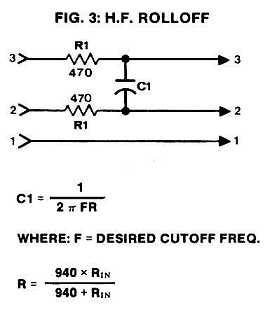wkbdgeorge
Well-known member
Hey everybody. I am hoping someone can enlighten me on how to accomplish a low pass filter for a balanced line level signal. Basically, I want to cut the highs down to around 100 or 200 hz off a balanced signal cable.
Is this possible without unbalancing the signal? I am looking for an easy-ish way. I dont know how to make a differential amp to unbalance the signal and I dont think i have any spare transformers laying around.
I was thinking of 2 ways: Either i match the resister and capacitor as best as i can for both the high and low lines and hope that doesnt throw the cmrr off. (would that even matter??) ....... Or...... I tie low to ground and only do a rc network for the high signal.
I really appreciate any insights that somebody might have on this. Thanks!
Is this possible without unbalancing the signal? I am looking for an easy-ish way. I dont know how to make a differential amp to unbalance the signal and I dont think i have any spare transformers laying around.
I was thinking of 2 ways: Either i match the resister and capacitor as best as i can for both the high and low lines and hope that doesnt throw the cmrr off. (would that even matter??) ....... Or...... I tie low to ground and only do a rc network for the high signal.
I really appreciate any insights that somebody might have on this. Thanks!




